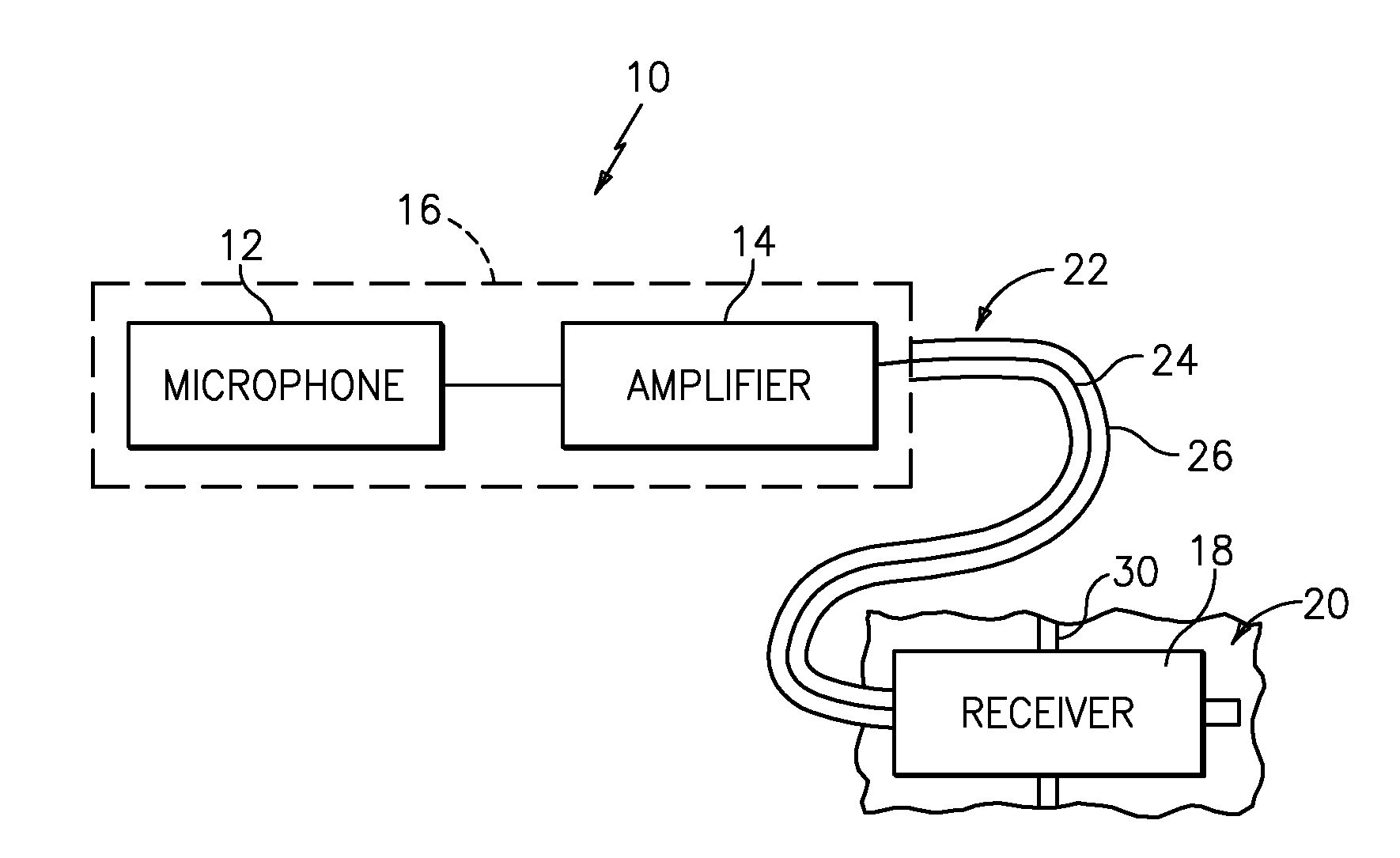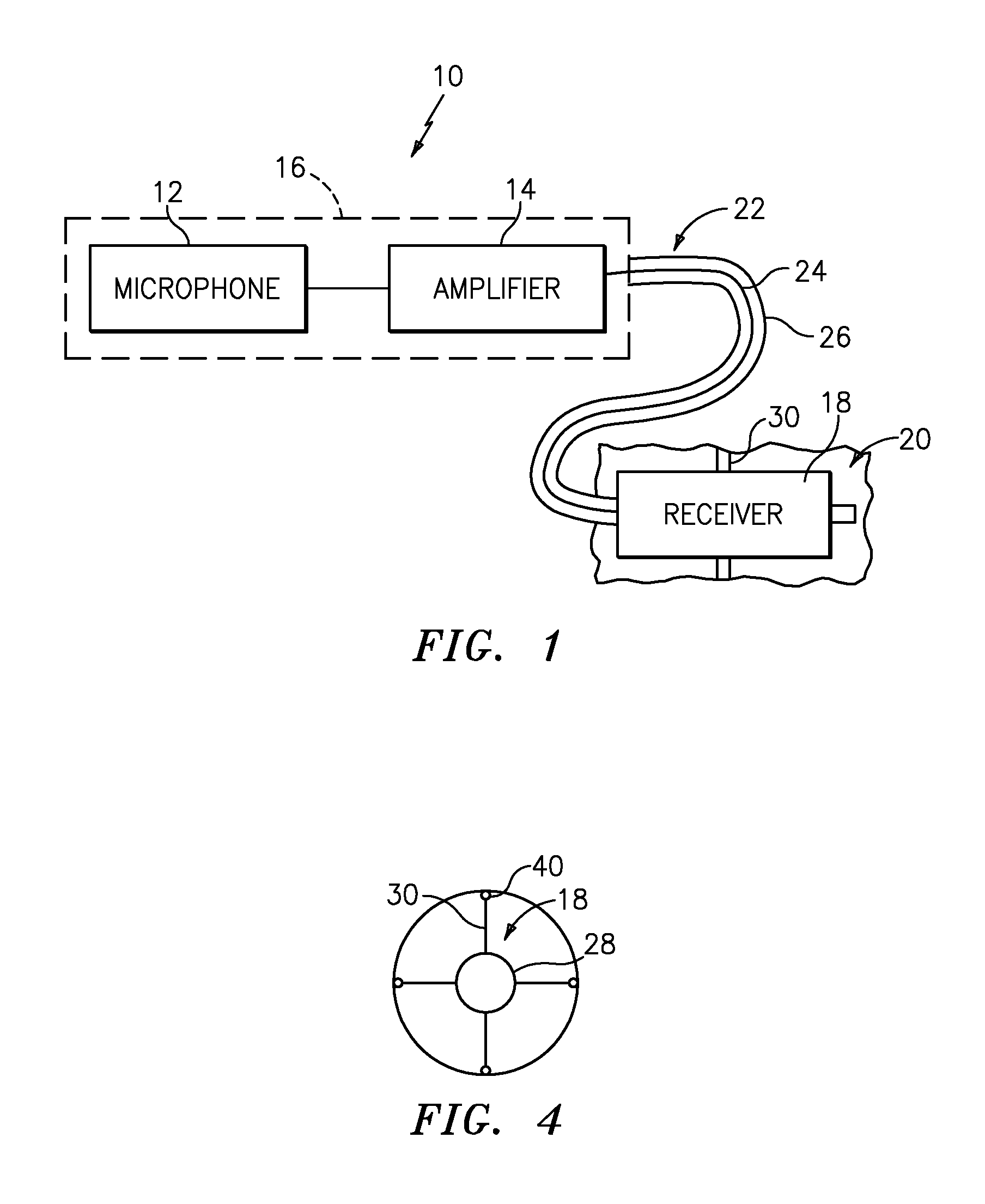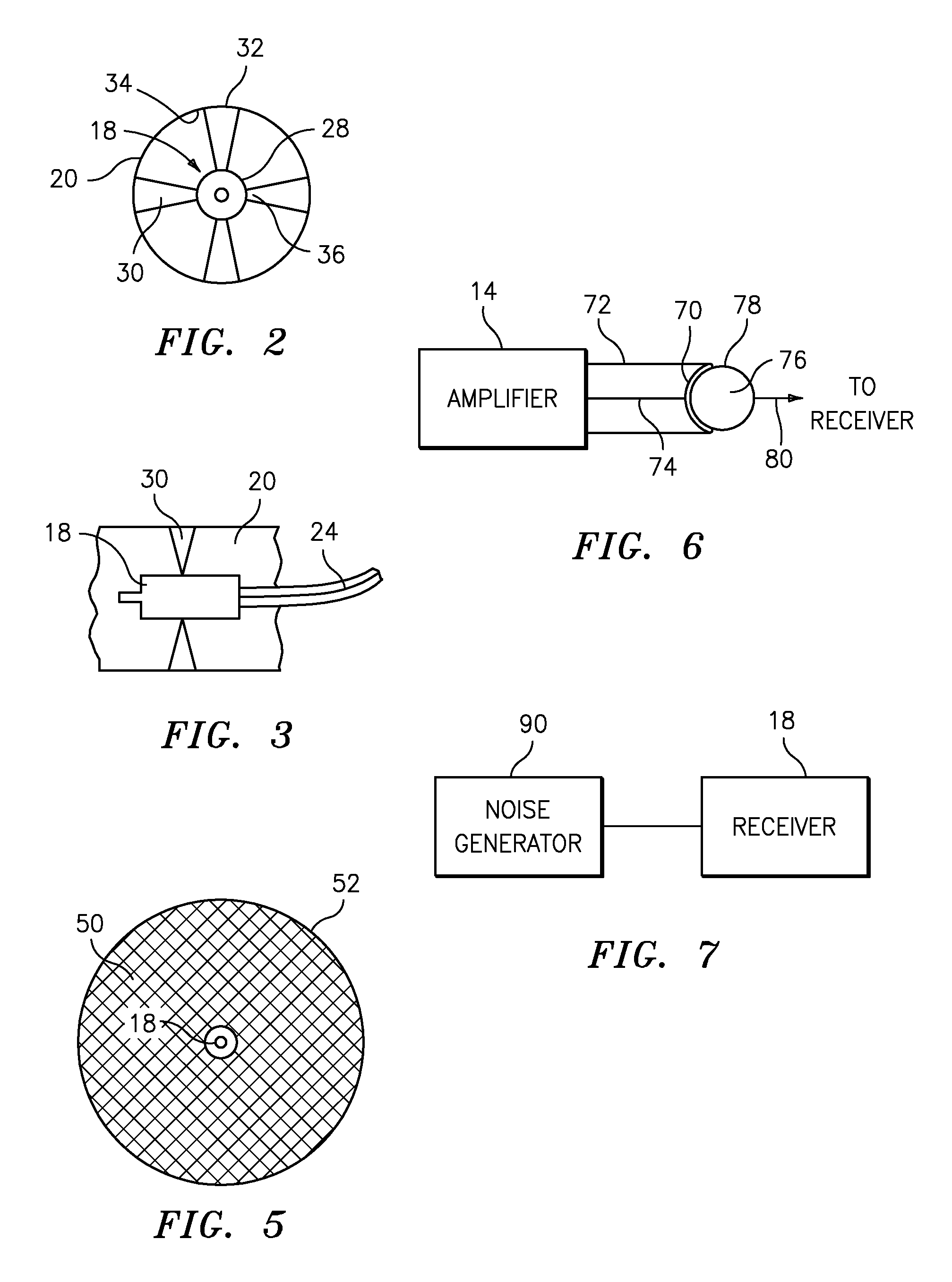Open ear hearing aid system
a hearing aid and open ear technology, applied in the field of hearing aid systems, can solve the problems of rejection of amplification, increased risk of acoustic feedback prohibiting, and occlusion problems, and achieve the effect of avoiding the occlusion
- Summary
- Abstract
- Description
- Claims
- Application Information
AI Technical Summary
Benefits of technology
Problems solved by technology
Method used
Image
Examples
Embodiment Construction
)
[0022]Referring now to the drawings, FIG. 1 illustrates a hearing aid system 10 in accordance with one aspect of the present invention. The hearing aid system 10 includes a microphone 12 and an amplifier 14. The microphone 12 and the amplifier 14 are positioned within a housing 16. The housing 16 may form part of a behind—the—ear unit, part of a unit installed within a user's eyeglass frame, or part of a unit installed within a headset. The hearing aid system 10 may further include a battery (not shown) and means for controlling the hearing aid such as a volume control.
[0023]The hearing aid system 10 further includes a receiver 18 which is separated from the housing containing the microphone. The receiver is installed and suspended within the ear canal 20 of a user and means 22 for transmitting amplified output from the amplifier 14 to the receiver 18. The sound transmitting means 22, depending upon the particular kind of amplifier 14 being used, may be a wire 24 encased within a p...
PUM
 Login to View More
Login to View More Abstract
Description
Claims
Application Information
 Login to View More
Login to View More - R&D
- Intellectual Property
- Life Sciences
- Materials
- Tech Scout
- Unparalleled Data Quality
- Higher Quality Content
- 60% Fewer Hallucinations
Browse by: Latest US Patents, China's latest patents, Technical Efficacy Thesaurus, Application Domain, Technology Topic, Popular Technical Reports.
© 2025 PatSnap. All rights reserved.Legal|Privacy policy|Modern Slavery Act Transparency Statement|Sitemap|About US| Contact US: help@patsnap.com



